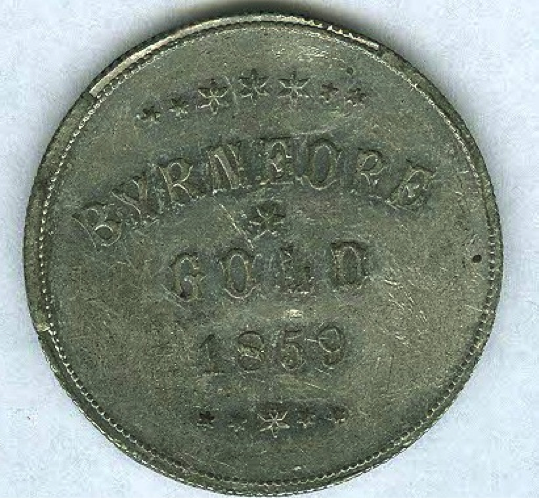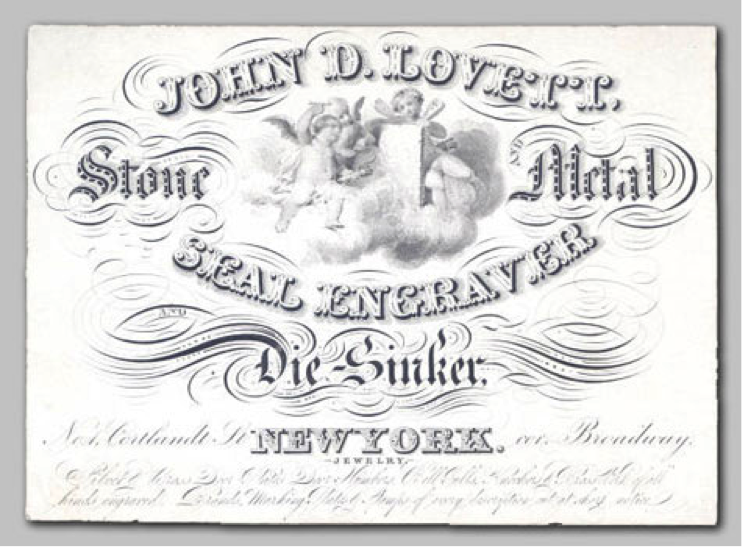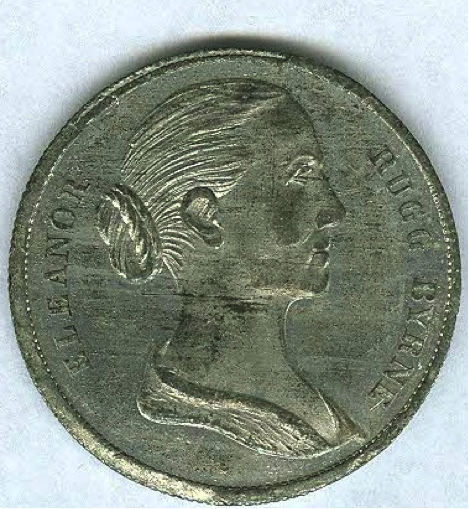- About MAA
- Membership
- MAA Publications
- Periodicals
- Blogs
- MAA Book Series
- MAA Press (an imprint of the AMS)
- MAA Notes
- MAA Reviews
- Mathematical Communication
- Information for Libraries
- Author Resources
- Advertise with MAA
- Meetings
- Competitions
- Programs
- Communities
- MAA Sections
- SIGMAA
- MAA Connect
- Students
- MAA Awards
- Awards Booklets
- Writing Awards
- Teaching Awards
- Service Awards
- Research Awards
- Lecture Awards
- Putnam Competition Individual and Team Winners
- D. E. Shaw Group AMC 8 Awards & Certificates
- Maryam Mirzakhani AMC 10 A Awards & Certificates
- Two Sigma AMC 10 B Awards & Certificates
- Jane Street AMC 12 A Awards & Certificates
- Akamai AMC 12 B Awards & Certificates
- High School Teachers
- News
You are here
Oliver Byrne: The Matisse of Mathematics - Biography 1850-1859
American publisher Appleton and Company of New York City employed Oliver Byrne to edit A Dictionary of Machines, Mechanics, Engine Work, and Engineering. This massive and popular work became known as Appleton's Dictionary. Published in 1852, the book went through multiple editions. Evidence indicates Byrne edited the dictionary only through the letter F.54 A positive review of Appleton’s Dictionary concluded,55
We observe, however, with surprise, that the last number of the second volume is accompanied by new title-pages for both volumes, in which the name of the editor [Byrne] is altogether omitted. What is the meaning of this?
Appleton's Mechanics' Magazine and Engineers' Journal responded that a replacement editor was “invited by the Messrs. Appleton to take the entire charge of the editorial department of their great Dictionary, then in progress, and published as far as the letter F.”56
While living in the United States, Byrne published three pamphlets advocating Irish rebellion against British rule.57 It was said at the time that, “[Oliver Byrne] did more than any man in America to infuse into his emigrant countrymen a military spirit.”58 Byrne dedicated Freedom to Ireland to the memory of William Byrne. “Billy Byrne” of County Wicklow, Ireland died a martyr of the Irish rebellion against British rule when he was executed in 1799. It is no surprise that Oliver Byrne made no mention of his American citizenship or his Irish nationalism efforts in any of his Royal Literary Fund applications.
Copyright issues arose for Byrne both in London and the United States. Byrne’s Practical Metal Worker’s Assistant was claimed “a barefaced piracy of great portions of two volumes on ‘Turnary and Mechanical Manipulation,’ published by Mr. Holtzappel, deceased, mechanist and writer.” Its sale by Chapman was prevented in England. A newspaper covering the case reported, "The plaintiff was the widow in the executrix of her ingenious husband [Mr. Holtzappel]."59 Present day further investigation uncovered no other accusations against Byrne for plagiarism. Before Byrne completed the five-year naturalization process and became a U.S. citizen in 1854, he himself reported that publisher Henry Carey Baird “put [Byrne] into law for selling a copyright, not being a citizen.”60 Byrne later published The Young Geometrician with Chapman and Hall in 1865.61
Although it is not known if Byrne traveled to France, in 1856 he published a French guidebook on engineering and railroads entitled Vade Mecum: De L’Ingénieur de Chemins de Fer Donnant.62
After a ten year stretch residing in the United States with no Royal Literary Fund financial aid applications, in 1858, Byrne requested RLF funds63
to obtain means to bring myself, and family to England … I have no political patronage [in the United States], not having taken any part in the politics of that country … the only article of my own, in this room is a cooking stove, not yet paid for.
Before leaving the United States, Byrne made an “important metallic discovery.” He developed a process of smelting a new metal he called "Byrneore" or "Byrne metal." His metal looked like gold or silver but contained very little of either. Byrne claimed that his new alloy “would defy detection by more than nine-tenths of the dealers in wares manufactured of pure gold and silver.” Its weight and appearance were much like those of gold or silver, but at a considerably lower price. Byrneore was to be used “in the manufacture of watches, rings, pencils, spoons, forks, heads for canes, tooth-picks, pens, table sets, chandeliers, and in fact everything in which gold and silver has been used.”64 It is doubtful Byrneore ever went into commercial production.
To commemorate his new alloys, Byrne apparently commissioned medals with the profile of his wife, Eleanor Rugg Byrne, on the obverse.65 On the reverse of the medal was written “BYRNEORE GOLD 1859” with 13 stars. The medals were struck in copper plain edge, copper reeded edge (3 only), brass, and white metal.66
|
|
 |
Figure 6a. Eleanor Rugg Byrne medal made of Byrneore gold in 1859 (Images of a coin privately held by Dr. Sid Kolpas, who acquired it in 2015)

Figure 6b. It has been conjectured that Byrne's medals, made from his Byrneore, were manufactured by John D. Lovett, a seal engraver, or die sinker, in New York City. (See David Baldwin's Lovett Tokens & Medals website http://lovetttokensmedals.com Image used courtesy of Baldwin)
54 Franklin Institute, Journal of the Franklin Institute (Philadelphia: Pergamon Press, 1851) 22:360.
55 Franklin Institute. Journal of the Franklin Institute (Philadelphia: Pergamon Press, 1851), 22:360.
56 Julius Walker Adams, Appleton’s Mechanics' Magazine and Engineers' Journal, Volume 1 (New York: D. Appleton & Co., 1852-1853), 767.
57 First, Oliver Byrne, The first fifty lessons on military art and science (New York: D. &. J. Sadlier, 1850). Second, Oliver Byrne, Freedom to Ireland: The Art and Science of War for the People. The Pike Exercise, Foot Lancers, Light Infantry, and Rifle Drill. To which is Added a Short Practical Treatise on Small Arms, and Ammunition, Street and House Fighting, and Field Fortification (Boston: Patrick Donahoe, 1853). Third, Lectures on the Art and Science of War: addressed to Irish American citizen soldiers (Boston: Patrick Donahoe, 1853).
58 John O’Hart, The Irish and Anglo-Irish landed gentry: when Cromwell came to Ireland, or, a supplement to Irish pedigrees (New York: Barnes & Noble, 1968). This comment is unattributed in the book.
59 "Rolls' Court, Chancery-Lane, Wednesday, July 14," The Times (London), 15 July 1852, p. 7, col. 1. See also "Holtzappel v. Chapman," newspaper clipping, c. 1852; RLF application (28 May 1842).
60 For H. C. Baird trouble, see RLF application (6 January 1858). For citizenship, see “New York, Naturalization Petitions, 1794-1906,” Oliver Byrne, Court of Common Pleas for the City and County of New York, date of naturalization 27 May 1854; Ancestry (http://www.ancestry.com : 7 August 2014; citing: Petitions for Naturalization, 1793-1906, Record Group 85, National Archives at New York City, New York, U.S.A.
61 “The Young Geometrician” advertisement, Chapman & Hall, Piccadilly; The Times (London), 12 February 1866, p. 13, col. 8.
62 Vade Mecum De L’Ingénieur, de Chemins de Fer Donnant (Paris: De Napoléon Chaix et Ce, 1856).
63 RLF application (6 January 1858).
64 "Important Metallic Discovery," The Weekly Arizonian (Tucson), 20 October 1859, p. 1, col. 3; Arizona Digital Newspaper Program (http://adnp.azlibrary.gov : accessed 25 January 2015).
65 “1424 Medal of Eleanor Rugg Byrne ; gilt and tin ; 3 each. 6 pieces,” Catalog of J. S. Twining's Collection of Gold, Silver and Copper American Coins with a little collection of Bric-a-Brac Washington Pitchers and Japanese Curios to be sold at Auction, 27-29 April 1886, New York City, (Boston: Marvin & Son, Numismatic Printers, 1886), 64.
66 Lovett Tokens & Medals (http://lovetttokensmedals.com : accessed 28 July 2015).
Susan M. Hawes (Genealogist) and Sid Kolpas (Delaware County Community College), "Oliver Byrne: The Matisse of Mathematics - Biography 1850-1859," Convergence (August 2015)





